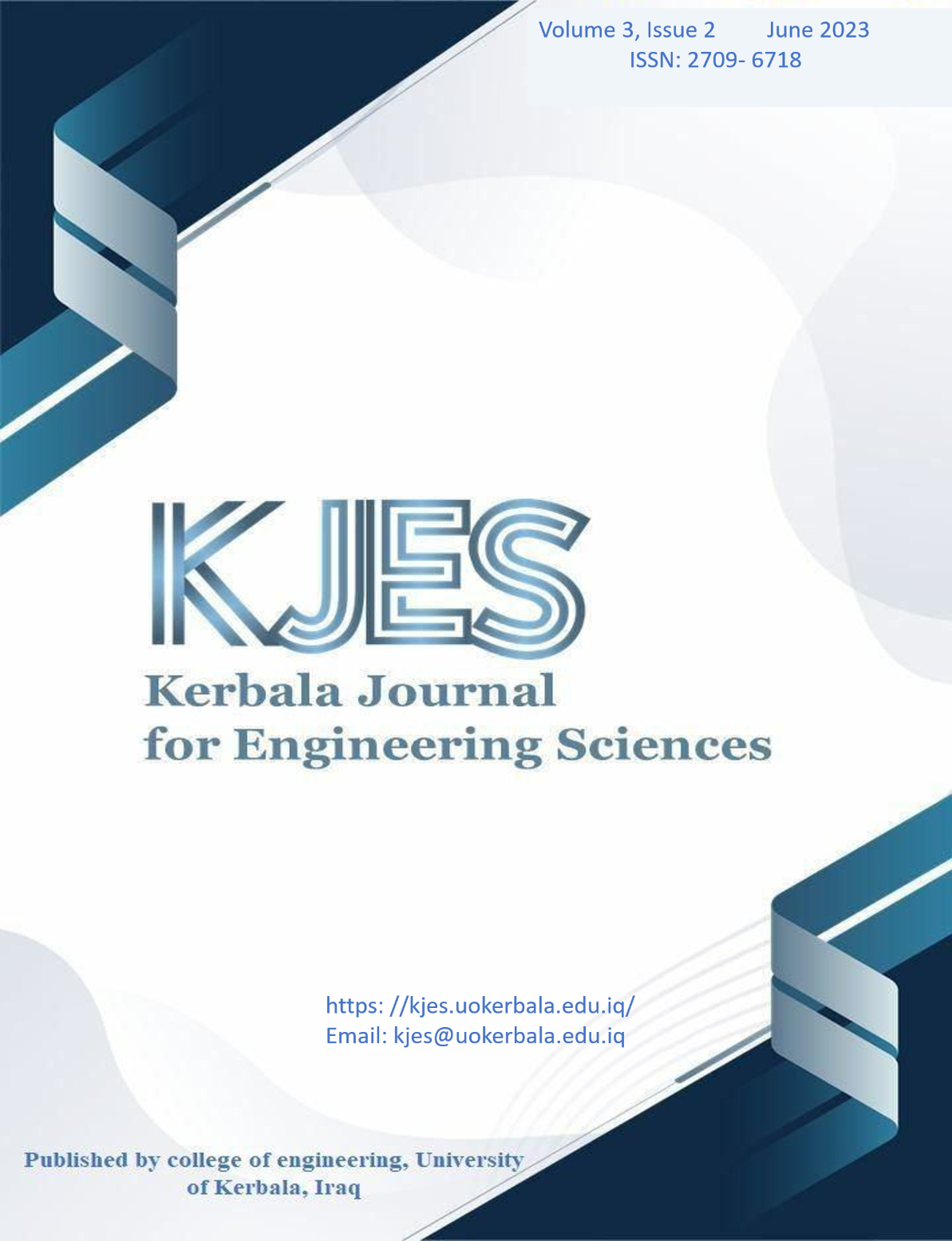Abstract
This research studies the behavior of double tube steel columns filled with high-strength
concrete (HSC) between the gap surrounded by the two pipes and others without filling. The columns
are tested by using a concentrated centric load. The concentrated load was applied in the form of
cycles by the increased load. Six samples of columns were examined with different variables. The
study’s parameters in the experimental work are specific to the steel fiber in the concrete mix and
type section and the other parameter to the non-filled tube. In terms of high strength concrete mix,
the percentage of fibers used was 0.5% and 1.5% of the total concrete volume. As for the steel tube,
a square and circular cross-section was used, as well as column length. Plotting the results obtained
through load curves with deflection and the results were compared with samples non filled with
concrete. The results showed that increasing the percentage of fibers in high strength concrete
increases the maximum bearing of the column, while an empty tube has much less bearing than it is
infilled with high strength concrete. Finally, the theoretical analysis of the results was performed with
ACI. From the experimental results, the ACI provision gives underestimation about the load carrying
capacity of the composite column and overestimation for only steel.
concrete (HSC) between the gap surrounded by the two pipes and others without filling. The columns
are tested by using a concentrated centric load. The concentrated load was applied in the form of
cycles by the increased load. Six samples of columns were examined with different variables. The
study’s parameters in the experimental work are specific to the steel fiber in the concrete mix and
type section and the other parameter to the non-filled tube. In terms of high strength concrete mix,
the percentage of fibers used was 0.5% and 1.5% of the total concrete volume. As for the steel tube,
a square and circular cross-section was used, as well as column length. Plotting the results obtained
through load curves with deflection and the results were compared with samples non filled with
concrete. The results showed that increasing the percentage of fibers in high strength concrete
increases the maximum bearing of the column, while an empty tube has much less bearing than it is
infilled with high strength concrete. Finally, the theoretical analysis of the results was performed with
ACI. From the experimental results, the ACI provision gives underestimation about the load carrying
capacity of the composite column and overestimation for only steel.
Keywords
Steel tubular filled concrete in double Skinned; reactive powder concrete (RPC); Tubes full with concrete; repeated loading
Abstract
يدرس هذا البحث سلوك الأعمدة الفولاذية ذات الأنبوب المزدوج المملوءة بالخرسانة عالية المقاومة (HSC) بين الفجوة المحيطة بالأنبوبين والأخرى بدون حشو. يتم اختبار الأعمدة باستخدام حمل مركزي مركّز. تم تطبيق الحمل المركّز على شكل دورات بفعل الحمل المتزايد. تم فحص ست عينات من الأعمدة بمتغيرات مختلفة. معلمات الدراسة في العمل التجريبي خاصة بالألياف الفولاذية في الخلطة الخرسانية ومقطع النوع والمعلمة الأخرى للأنبوب غير المملوء. من حيث الخلطة الخرسانية عالية المقاومة، كانت نسبة الألياف المستخدمة 0.5٪ و 1.5٪ من إجمالي حجم الخرسانة. أما بالنسبة للأنبوب الفولاذي، فقد تم استخدام مقطع عرضي مربع ودائري، وكذلك طول العمود. تم رسم النتائج المتحصل عليها من خلال منحنيات الحمل مع الانحراف وتمت مقارنة النتائج مع عينات غير مملوءة بالخرسانة. وأظهرت النتائج أن زيادة نسبة الألياف في الخرسانة عالية القوة تزيد من أقصى تحمل للعمود، في حين أن الأنبوب الفارغ يكون أقل تحملاً بكثير مما هو مملوء بالخرسانة عالية القوة. وأخيرًا، تم إجراء التحليل النظري للنتائج باستخدامACI. ومن النتائج التجريبية، فإن توفير ACI يعطي تقديرًا أقل عن قدرة تحمل الحمل للعمود المركب وتقديرًا أعلى للصلب فقط.
Keywords
أنابيب فولاذية مملوءة بالخرسانة في طبقة مزدوجة؛ خرسانة مسحوقة تفاعلية (RPC)؛ أنابيب مملوءة بالخرسانة؛ تحميل متكرر
